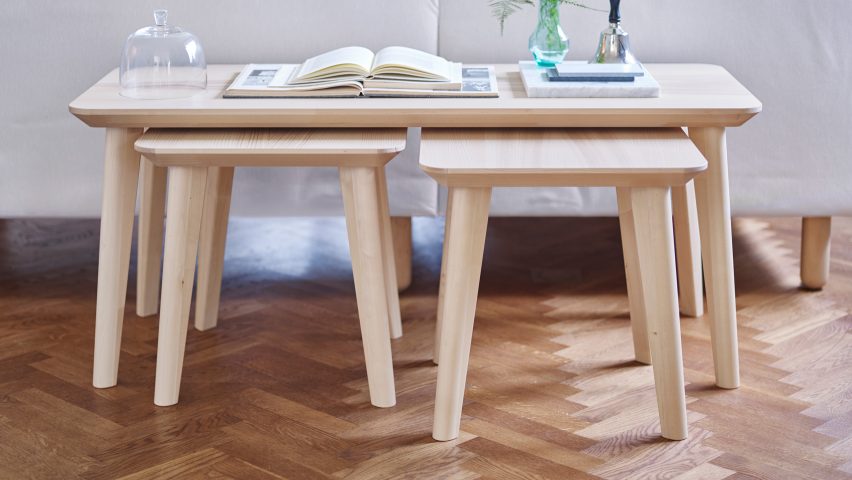
Kanye West and IKEA among Designs of the Year 2017 nominees
Kanye West, IKEA, OMA and David Adjaye are among the nominees for this year's Designs of the Year awards, which were announced by London's Design Museum today.
Dezeen is media partner for the annual awards programme, which celebrates the "world's best design". For 2017's Beazley Designs of the Year awards, there are 62 nominations split across six categories – architecture, digital, fashion, graphics, product and transport.
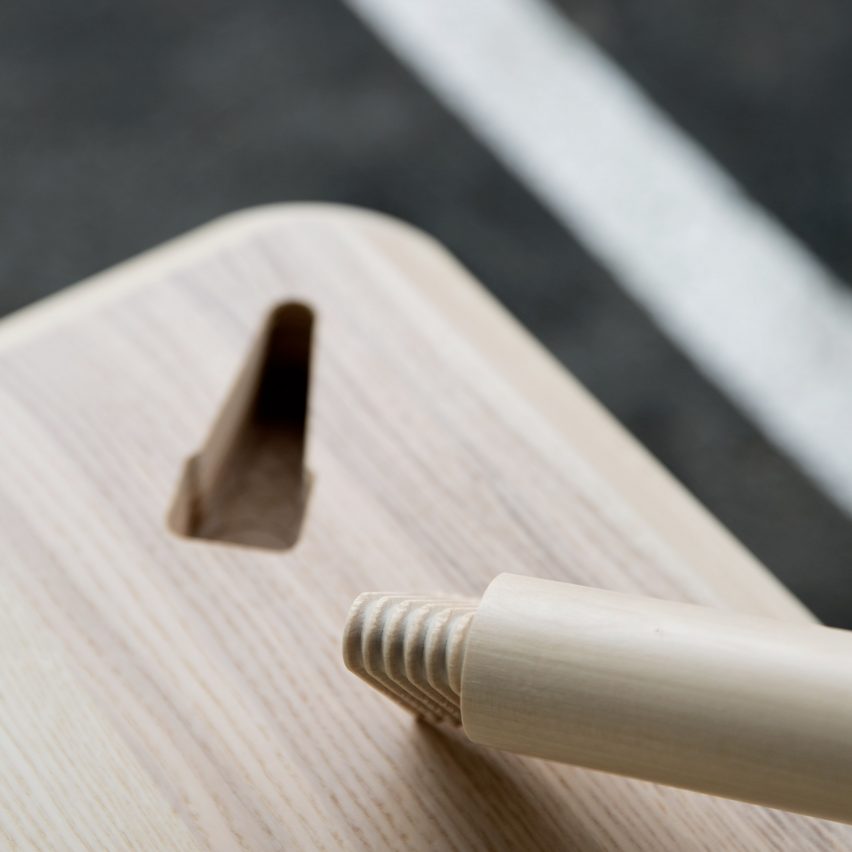
After taking home the grand prize last year, IKEA has been nominated again – this time for its "snap-together" flat-pack furniture, which is put together without screws or Allen keys.
The fashion category pits musician Kanye West, nominated for his Life of Pablo merchandise, against fashion designer Aitor Throup and his Rite of Spring collection.
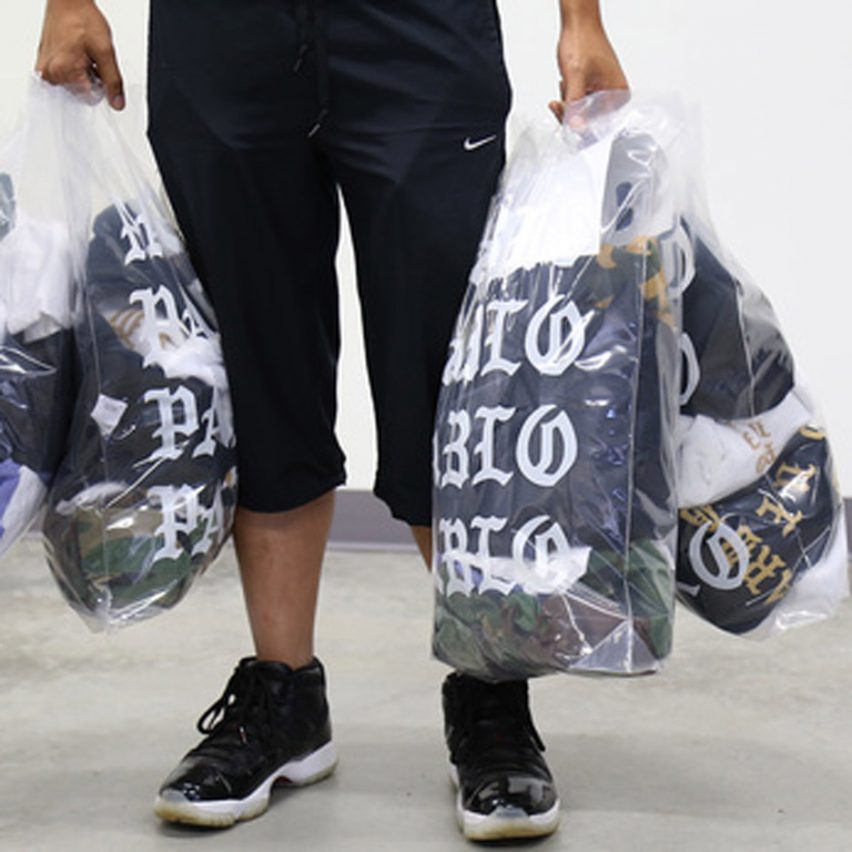
In a year that has seen Britain vote to leave the EU and Donald Trump become the US president – many of the nominations, inevitably, have more of a political focus.
Projects in the shortlist include the pink "pussyhat" with cat-shaped ears, which became a symbol of the Women's March on Washington following Trump's inauguration, as well as Wolfgang Tillmans' Remain Campaign for the Brexit referendum.
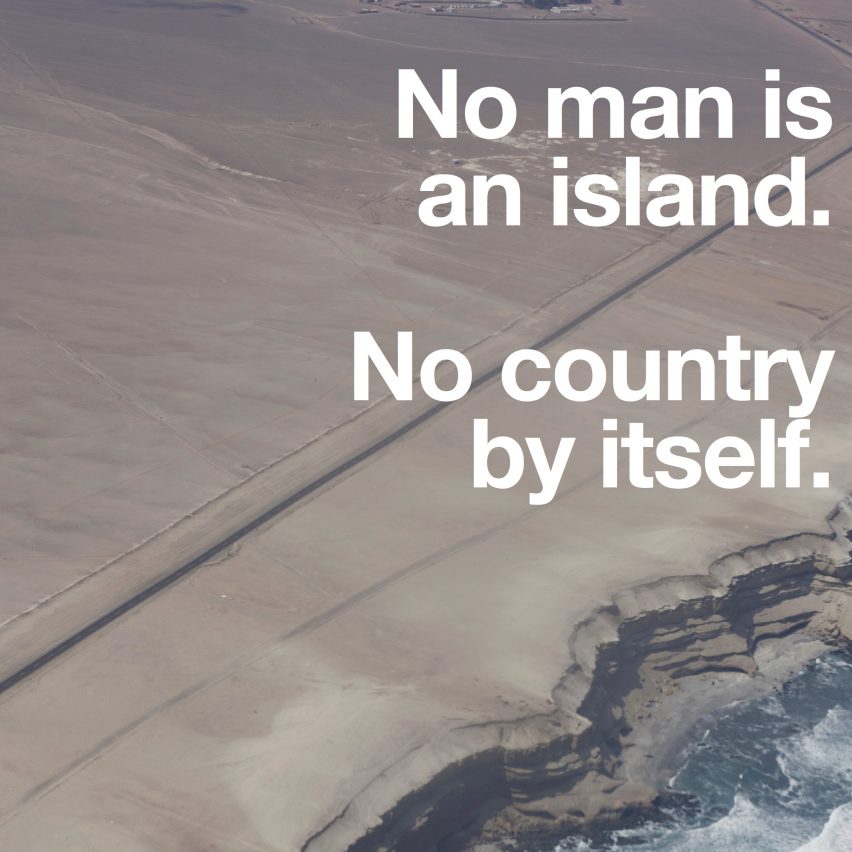
Gender equality is also another strong theme across this year's projects. A Where's Wally-style ad campaign by IC4Design that highlights lack of women in the Egyptian workforce is named in the graphics category, while a range of professional women emoji designs by Google feature in the digital section.
As with most years, the architecture category is dominated by big names. Zaha Hadid Architect's Antwerp Port House, David Adjaye's National Museum of African American History and Culture in Washington DC and OMA's Il Fondaco Tedeschi development in Venice are all listed.

This year's Serpentine Pavilion designer Diébédo Francis Kéré has also been recognised for his Lycee Schorge Secondary School.
The product category includes a number of sustainability-focused projects, such as the biodegradable Flax Chair by designer Christien Meindertsma and a range of pens with ink made from carbon emissions taken from vehicles and chimneys.
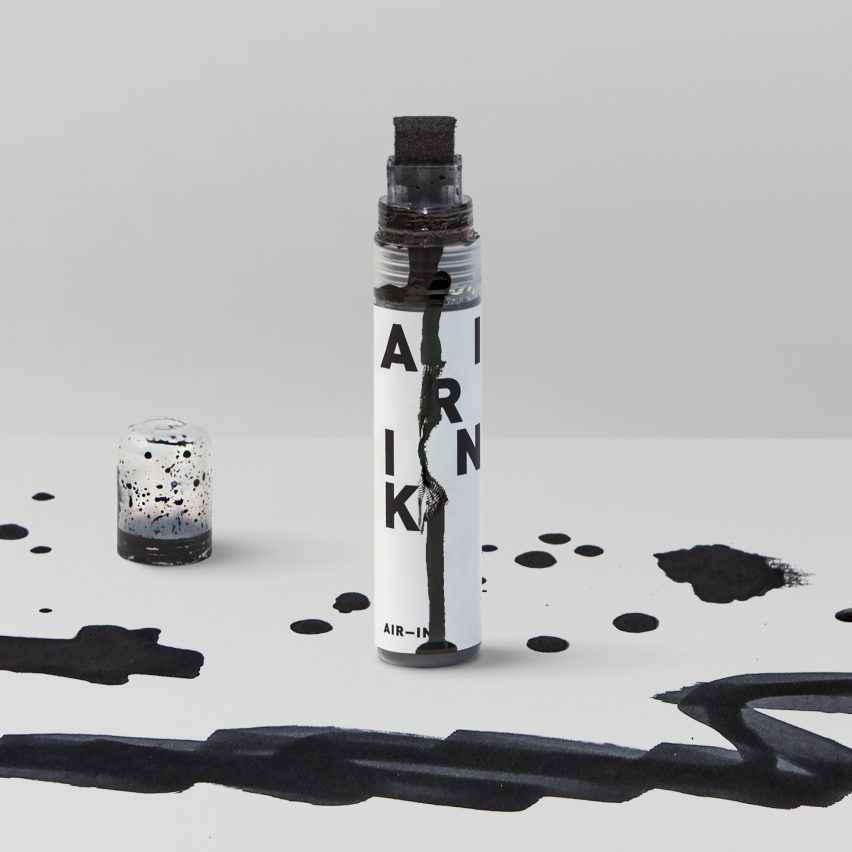
The MIT researchers who planned the "death of the traffic light" with a conceptual road system feature on the transport list, as does a self-balancing motorcycle by Honda that can move by itself and won't fall over.
All of the nominations from the Designs of the Year shortlist will be on display at the Design Museum in Kensington from 18 October. A winner will be selected in each category, and one overall winner will be announced on 25 January 2018.
Previous winners have included the 2012 Olympic Torch, the Heydar Aliyev Center by Zaha Hadid and Human Organs-on-Chips – a microdevice lined with living human cells to mimic the complex tissue structures of the human body.
Read on for the full list of nominations, with descriptions provided by the Design Museum.
Architecture
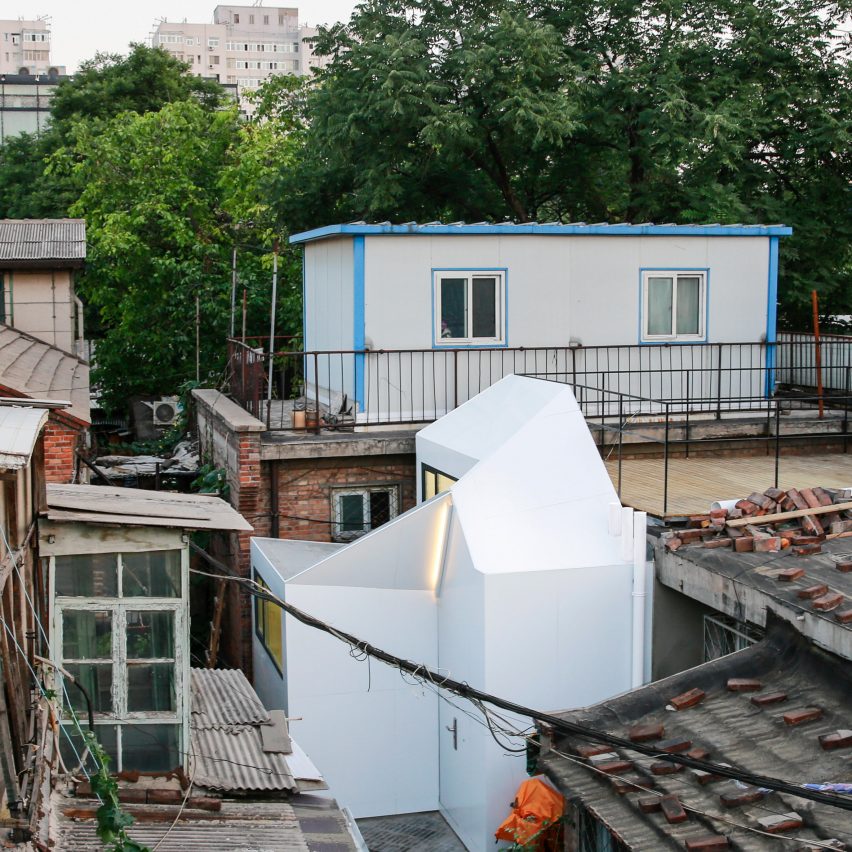
Mrs Fan's Plug-In House by People's Architecture Office
The Plugin House is built with a proprietary building renovation system developed as a result of the challenging context of Beijing hutong areas. The price of real estate in central Beijing makes owning a house difficult for many. However, the Plugin House costs 30 times less than a typical apartment. Plugin replaces part of a previously existing dwelling and adds new functions. These prefabricated modules incorporate insulation, interior and exterior finish into one moulded part.
Warka Water is a vertical structure designed to harvest potable water from the atmosphere (it collects rain, harvests fog and dew). It relies only on gravity, condensation and evaporation and doesn't require any electrical power. At a time when a quarter of the world's population lacks access to safe drinking water, Warka Water tower is designed to harvest drinkable water from the atmosphere.
Hegnhuset memorial and learning centre on Utøya, Norway by Blakstad Haffner Architects
Response to Norwegian terrorist attacks of 2011 that struck the island of Utøya, where 69 people – mostly teenagers – were murdered in one of two politically motivated attacks by far-right terrorist. The cafe building where 13 people tragically lost their lives during the attack has been enshrined within a new learning centre. The architect's response was to preserve one section of the cabin-like building – the rooms directly affected during the massacre – but to completely enclose it within a new pine structure. The outer layer is made up of 495 wooden slats, one for every person on the island that survived the attack, while the glazed inside layer is framed by 69 columns that pay tribute to every fatality.
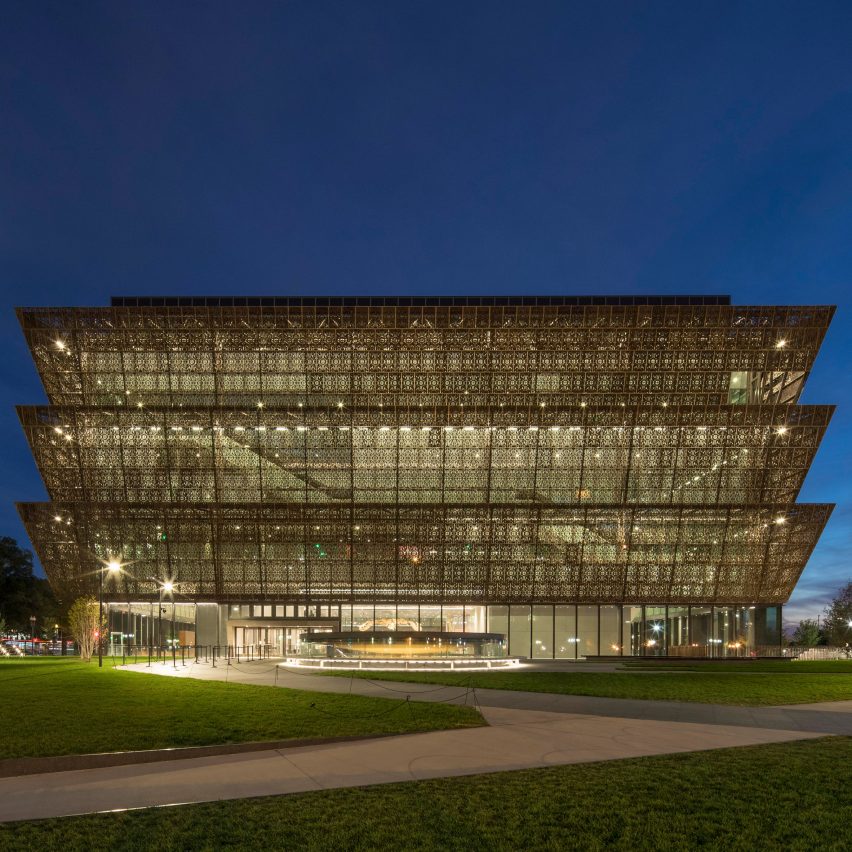
The museum was inaugurated by President Obama in September 2016 and is a long-awaited symbol for the African American contribution to the nation's history and identity. The museum houses galleries, administrative spaces, theatre space and collections storage space. Sir David Adjaye's approach created a meaningful relationship to this unique site as well as a strong conceptual resonance with America's longstanding African heritage. The 313,000 square-foot building comprises a three-tiered structure covered in bronze plates. Designed to shade the glazed facades behind, the filigree cladding is patterned to reference the history of African American craftsmanship.
Wind and Rain Bridge by Donn Holohan
Wind and Rain Bridge draws on the long tradition of wooden buildings in the region. Peitian is one of a number of isolated rural villages distributed throughout the mountainous regions of southern China, which, following severe flooding in early 2014 saw much of the infrastructure linking its disparate communities destroyed. This project aims to reconnect Peitian villages to the historic network of routes that link these isolated settlements.
Sala Beckett Theatre and International Drama Centre by Flores & Prats
The project is a renovation and extension of the former worker's club "Pau i Justícia", deeply rooted in the memory of the Barcelona neighbourhood Poblenou, a space where long ago neighbours had celebrated marriages, first communions and parties, which was then abandoned for many years. The new building maintained the spatial characteristics of the original building while also expanding and adapting the space to accommodate a new programme of exhibitions and activities.
The Calais Builds Project by Grainne Hassett with architecture students from University of Limerick
The Calais Builds Project captured the needs, culture and hopes of its residents. In 2016, architect Grainne Hassett along with students from the University of Limerick and local migrants designed and built a major community infrastructure, including a Women's and Children's Centre and the Baloo's Youth Centre. These were demolished in 2016 by the French Government and its inhabitants displaced.
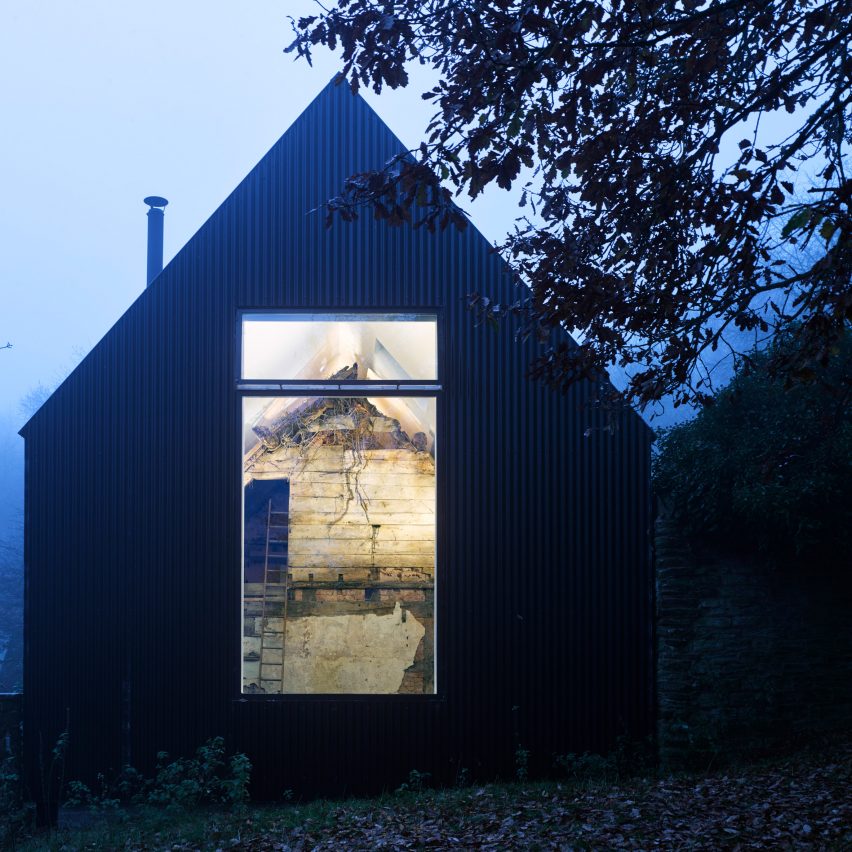
Croft Lodge Studio by Kate Darby Architects and David Connor Design
The strategy was not to renovate or repair the 300 year old listed building but to preserve it perfectly. The ruin is protected from the elements within a new high performance outer envelope. The new outer shell, which retains the shape of the existing cottage is clad in black corrugated iron, reflecting the common use of this material in Herefordshire for agricultural buildings.
Lycée Schorge Secondary School by Kéré Architecture
Located in the third most populated city in Burkina Faso, the Lycée Schorge Secondary School sets a new standard for educational excellence in the region. The design for the school consists of 9 modules which accommodate a series of classrooms and administration rooms in a radial layout which wrap around a central public courtyard. The architecture not only functions as a marker in the landscape, it is also a testament to how local materials, in combination with creativity and team‑work, can be transformed into something significant with lasting effects.
Weltsadt – Refugees' Memories and Futures as Models by Schlesische27 International Youth, Arts and Culture Center in collaboration with Raumlaborberlin and the SRH Hochschule der Populären Künste
The exhibition features models of buildings made by people from Africa and the Middle East who came to Germany as refugees. The buildings are homes, schools, offices, workshops and houses of prayer which are displayed as a walk-through cityscape, a world city. Made of cardboard, wood and found materials, the models reflect on the lost spaces and trusted memories but equally of new beginnings of the people who build the models. Visitors can see each of the 1:10 scale buildings up close.
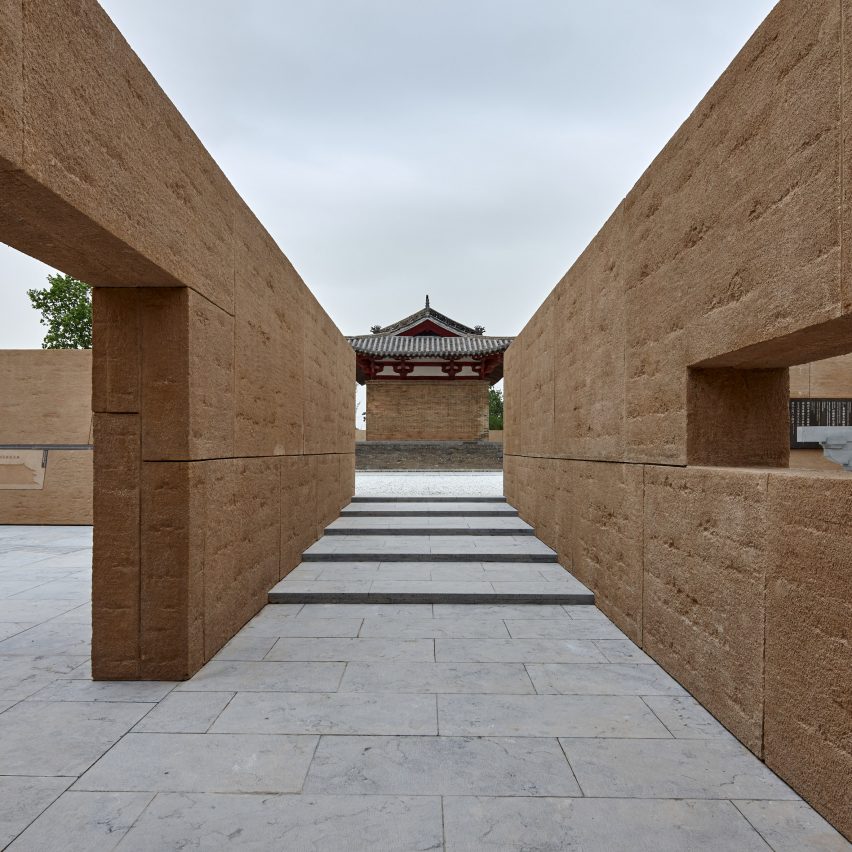
The Environmental Enhancement of the Five Dragons Temple by Urbanus
Situated in Ruicheng County, Shanxi Province, the Five Dragons Temple is listed as a class A cultural relic. Built in 831 A.D. during the Tang Dynasty, it is the oldest surviving Taoist temple. In 2015, Vanke Group initiated the "Long Plan" to raise funds to revitalise the environment of the Five Dragons Temple. This plan also helped to raise the public awareness of this historical preservation project. This initiative would then go on to become the first time where the government and private funds cooperated for the preservation of cultural relics, as well as the promotion of cultural protection through the platforms of internet and the international Expo.
Port House by Zaha Hadid Architects
The new Port House in Antwerp repurposes, renovates and extends a derelict fire station into a new headquarters for the port – bringing together the port's 500 staff that previously worked in separate buildings around the city. The waterside site offered sustainable construction benefits, allowing materials and building components to be transported by water, an important requirement to meet the port's ecological targets. The old fire station is heritage listed so had to be integrated into the new project. ZHA's design is an elevated extension, rather than a neighbouring volume which would have concealed at least one of the existing facades.
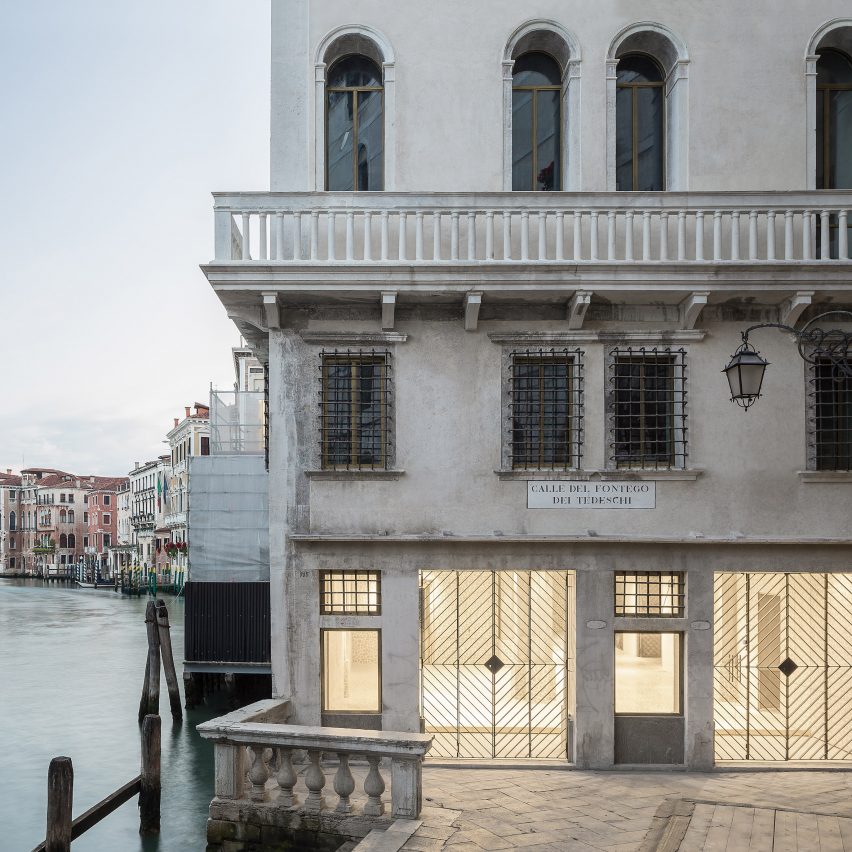
First constructed in 1228, and located at the foot of the Rialto Bridge across from the fish market, the Fondaco dei Tedeschi is one of Venice's largest and most recognisable buildings. It was used as a trading post for German merchants, a customs house under Napoleon, and a post office under Mussolini. Depicted by Canaletto and other masters, and photographed countless times as the impressive but anonymous backdrop of the Rialto bridge, the Fondaco stands as a mute witness of the Venetian mercantile era, its role diminished with the progressive depopulation of Venice. The Fondaco dei Tedeschi can now unlock its potential as a major destination and vantage point for tourists and Venetians alike; a contemporary urban department store staging a diverse range of activities, from shopping to cultural events, social gatherings and everyday life. OMA's renovation, both subtle and ambitious, avoids nostalgic reconstructions of the past and it demystifies the sacred image of a historical building.
Digital
Premier League on-air branding by DixonBaxi
The Premier League is the world's most watched football league. With an estimated viewing audience of over 2 billion fans it has a potential to reach 4.7 billion viewers worldwide. The radically new Premier League TV experience encompasses everything on-air from the show titles, in-match graphics, augmented-reality, touch screen and studio graphics. A custom motion graphics system called 'Field of Play' is inspired by the movement of the game – coloured blocks, tables, player profiles, team line-ups and score cards rise, fall and slide across the screen at varying speeds, referencing short passes, long balls, corners and dribbles
Pierre Chareau: Modern Architecture and Design by Esther da Costa and Diller Scofidio + Renfro for The Jewish Museum
The exhibition proposes a fresh look at the internationally recognised designer and examines his work in the Parisian cultural context between the wars to highlight his circle of influential patrons, engagement with the period's foremost artists, and designs for the film industry. Scofidio & Renfro created four V.R experiences that can be viewed alongside actual objects. The settings are based on archival photographs of Chareau's furniture, interiors and architecture, and on contemporary research done in Paris.
Saydnaya: Inside a Syrian Torture Prison by Forensic Architecture and Amnesty International
Forensic Architecture is one of the most intriguing contemporary research agencies bridging the fields of design, politics and jurisdiction. Borrowing methodologies from the realm of architecture, design, film, activism and theory; their research in spatial reconstruction provides evidence for international prosecution teams, political organisations, NGOs and the United Nations. For Saydnaya – Inside a Syrian Torture Prison, Forensic Architecture researchers worked together with prison survivors to reconstruct the architecture of the Saydnaya prison and their experiences within, using architectural and acoustic modelling. The prison model and the audio-visual documents resulting from it offer an intimate and chilling confrontation with the reality of Syrian prisons and detention facilities. Run by the Syrian government, these places are black holes; tens of thousands of people have been tortured, thousands have died, un-monitored. The project is part of a wider campaign led by Amnesty International calling on the Syrian government to allow independent monitors into its detention centres and urging other key players to weigh in on the debate.
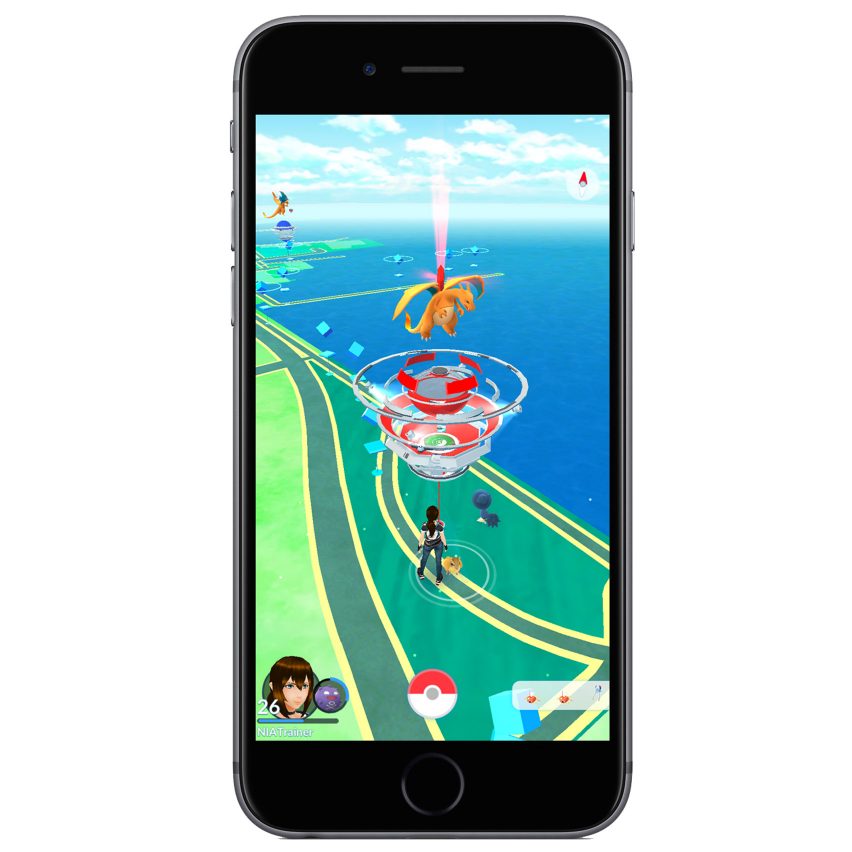
In Pokémon GO, users ('trainers') around the globe use their smartphones to explore their surroundings to find and catch wild Pokémon hiding in their local environment. Once players have encountered a Pokémon, they can catch it by using their smartphone's touch screen to throw a Poké Ball. Poké Balls and other special items can be found at PokéStops located at interesting places, such as public art installations, historical markers and monuments. Pokémon GO has been downloaded more than 750 million times however daily user dropped from 28 million to 5 million in April 2017.
OTHR by Joe Doucet, Dean DiSimone and Evan Clabots
OTHR is the first company dedicated to creating functional products for the home using 3D-printing. OTHR transitions 3D-printing from novelty to mainstream by partnering with the world's leading designers and brands to develop unique, beautiful, and useful products using transformative technologies and sold on-demand via OTHR's online platform.
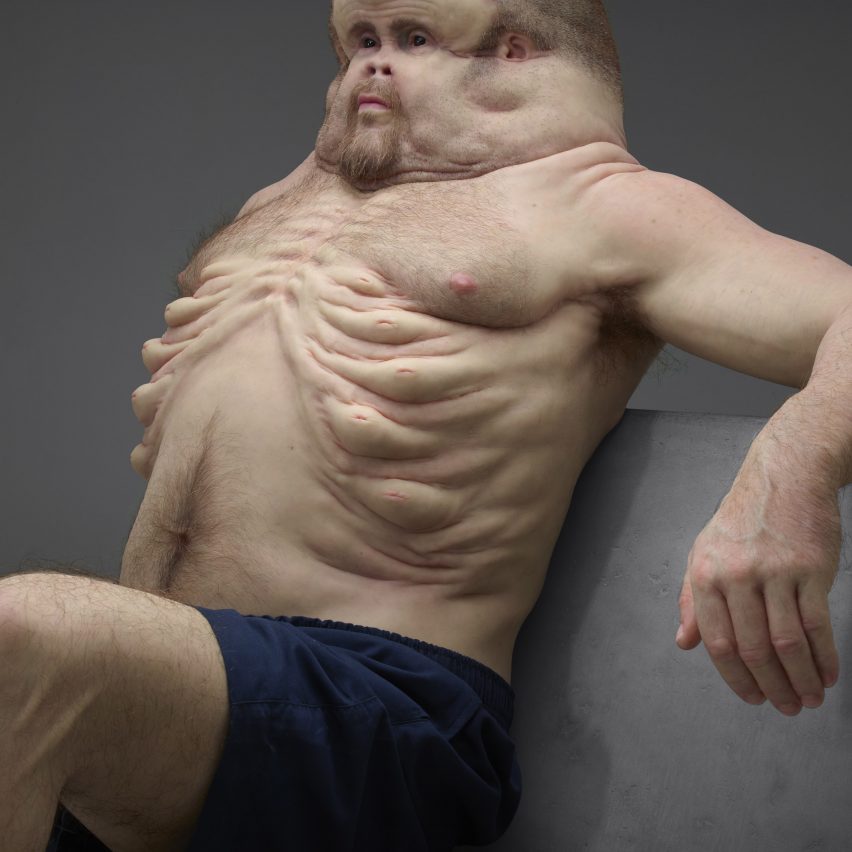
Meet Graham: The only person designed to survive on our roads by Patricia Piccinini for Transport Accident Authority
What if our bodies were built to survive a low impact crash? What might we look like? Part interactive sculpture, part educational tool and ultimately a catalyst for conversation, Graham shows us how the human body would need to change to survive a car crash.
Professional Women Emoji by Agustin Fonts, Rachel Been, Mark Davis, Nicole Bleuel and Chang Yang
During a workshop to propose a new visual Emoji identity, a small cross-functional team at Google determined that the representation of professional women within Emoji was lacking. From there, the team put together a proposal specifically targeting representation of women in the workforce across three main economic sectors, making sure role diversity and global appropriateness were considered.
Refugee Text by Kåre M. S. Solvåg, Caroline Arvidsson, Ciarán Duffy
Text message service to provide refugees with live updates on policy changes and practical information.
Google Noto by Google and Monotype
One of the biggest typeface projects in history, the result of five years' work. One of the aims of the project is to digitally preserve rarely-spoken languages to enable global communication.
Fashion
Pussyhat Project by Krista SuhJayna Zweiman, Kat Coyle and Aurora Lady
The Pussyhat Project instigated a social justice craftivist movement by organising women all around the world to knit and wear the now iconic pink pussyhat for the Women's March on January 21, 2016. The project started with the aims to serve as a visual representation of unhappiness with the Trump residency. What started as a small project among friends at the Little Knittery in Atwater village has turned into a global affair meaning that women who are unable to attend the march can still show their support.
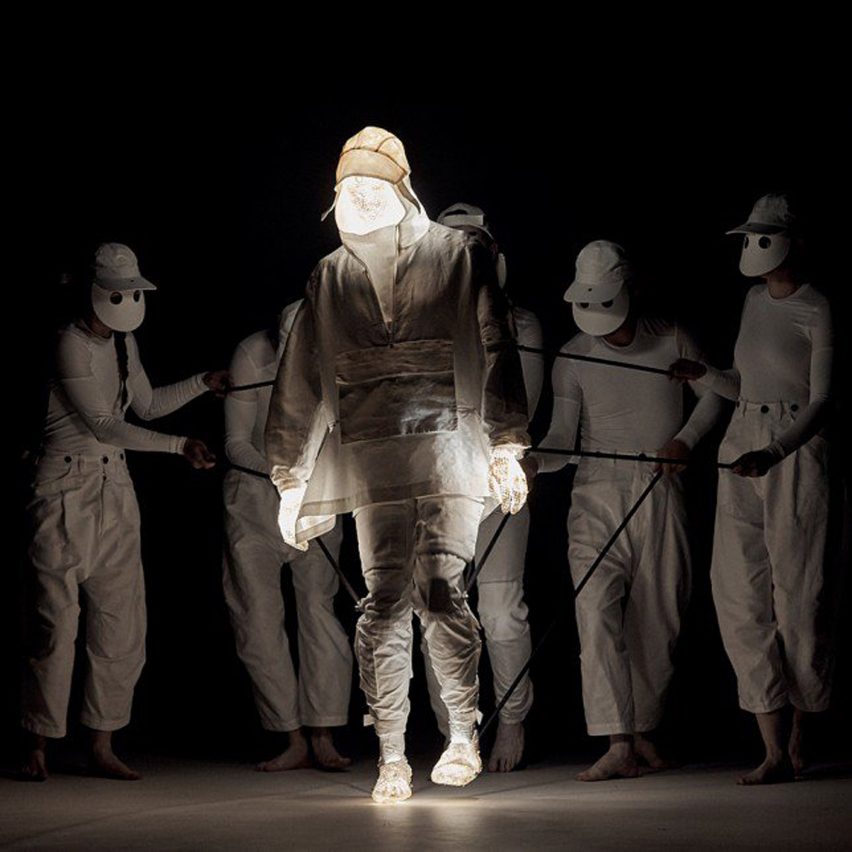
New Object Research The Rite of Spring/Summer/Autumn/Winter by Aitor Throup
On the 12 June 2016 during London Collections: Men, Aitor Throup presented his highly-anticipated New Object Research collection, titled The Rite of Spring/Summer/Autumn/Winter, on six life-size articulated sculptures. The articulated sculptures - acting as performing puppets during the show, aided by a team of London's best puppeteers - physically expressed the emotion and energy in Throup's autobiographical narrative. From the 14th June until the 6 July 2016, Aitor Throup exhibited all six of the life-sized articulated sculptures from the runway show on the ground floor of Dover Street Market in London.
Upcycling the Oceans by Ecoalf
Searching for the most efficient way of preserving the planet's natural resources, ECOALF has embarked on an ambitious project to help clean the oceans of debris through fishermen. It's a unique, complex and groundbreaking project which aims to transform the plastic debris found in the Mediterranean into thread to make fabric. The fabric is made of 43 per cent recycled polyester from the Mediterranean Sea, 29 per cent post-industrial linen, 22 per cent Tencel, and six per cent post-industrial cotton.
Life of Pablo merchandise and pop-up stores by Kanye West and Mat Vlasic for Bravado
From August 19 to 21, 2016, Kanye West in partnership with Bravado, opened 21 pop-up shops in various locations around the world to sell products tied to West's latest album, The Life of Pablo. This was the first simultaneous, global pop-up event, spanning the US, Europe, Africa, Australia and Asia. Each temporary store carried a broad line of Kanye's Pablo merchandise as well as limited edition designs exclusive to that city. The venues were announced 24 hours before they opened in each city, with the British pop-up located in Old Street.
Levi's Commuter Trucker Jacket with Jacquard by Google by Google with Levi's
Project Jacquard makes it possible to weave touch and gesture interactivity into regular textiles using standard industrial looms. This allows fashion designers to embed digital interactivity and connectivity into the apparel as part of their natural design process, making technology a new "material" for their creative expression. In collaboration with Google, Levi's creative team reimagined their Commuter Trucker Jacket by weaving Jacquard Threads into denim to create a functional, fashionable and interactive jacket for the urban commuter.
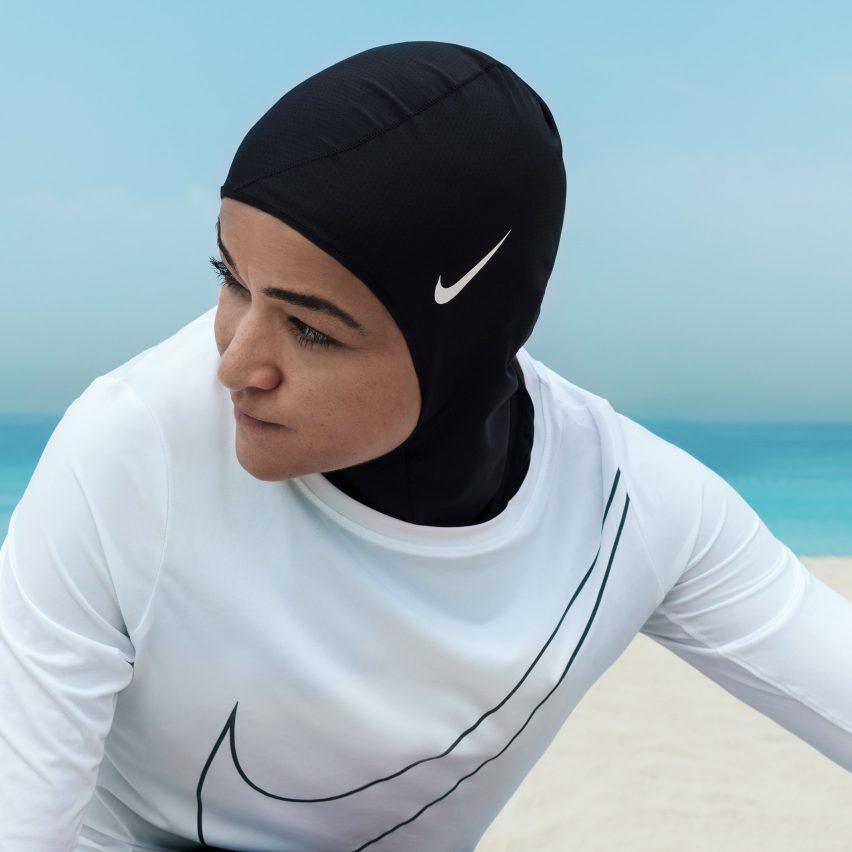
Nike has worked alongside a team of athletes to develop a single-layer stretchy Hijab inspired by Sarah Attar's win for Saudi Arabia at the 2012 Olympics. It was unveiled two days before International Women's Day.
Graphics
Protest Banner Lending Library by Aram Han Sifuentes in collaboration with Verónica Casado Hernandez, Ishita Dharap, and Tabitha Anne Kunkes
The Protest Banner Lending Library is a space for people to gain skills to learn to make their own banners. Set up by Aram Han Sifuentes, a fiberbased social practice artist, she began making protest banners toward social justice in her Chicago apartment after the surprising upset of the November 2016 American election.
Finding Her by IC4 Design for UN Women Egypt
A campaign designed by Japanese illustrators IC4 Design for UN Women in Egypt and draws attention to the lack of women in Egyptian male dominated industries: politics, science and technology.
Ibiza Mykonos Jeremy Corbyn (Political Posters) by Michael Oswell
Ibiza Mykonos Jeremy Corbyn (Political Posters) is a series of over 40 hypothetical posters, begun in reaction to the announcement of an early general election. The project reflects a time of discursive collapse – the boundaries between public and private communication being continually eroded and blurred.
New logo and Identity for Reykjavik Art Museum by Karlssonwilker
Karlssonwilker partnered with Listasafn Reykjavíkur (The Reykjavik Art Museum), the preeminent art museum in Iceland, to develop a new identity and design system as part of its revitalizing effort. They worked on a visual system that would provide the museum with the tools to express its diversity in programming and to show the general public the connection between its three distinct houses: the Contemporary Art museum located in Hafnarhús, a Modern Art museum located at Kjarvalsstadir, and a Sculpture museum dedicated to the late Ásmundur Sveinsson, housed in Ásmundarsafn.
NAAFI design identity by NAAFI
NAAFI (aka No Ambition And Fuck-all Interest) is a club night and record label founded in 2010. It is a musical community that magnetises people and projects throughout Mexico. Through their comprehensive idea of design, NAAFI expands the understanding of the graphic field in a way that truly captures the spirit of a growing generation of a new and progressive creative community.
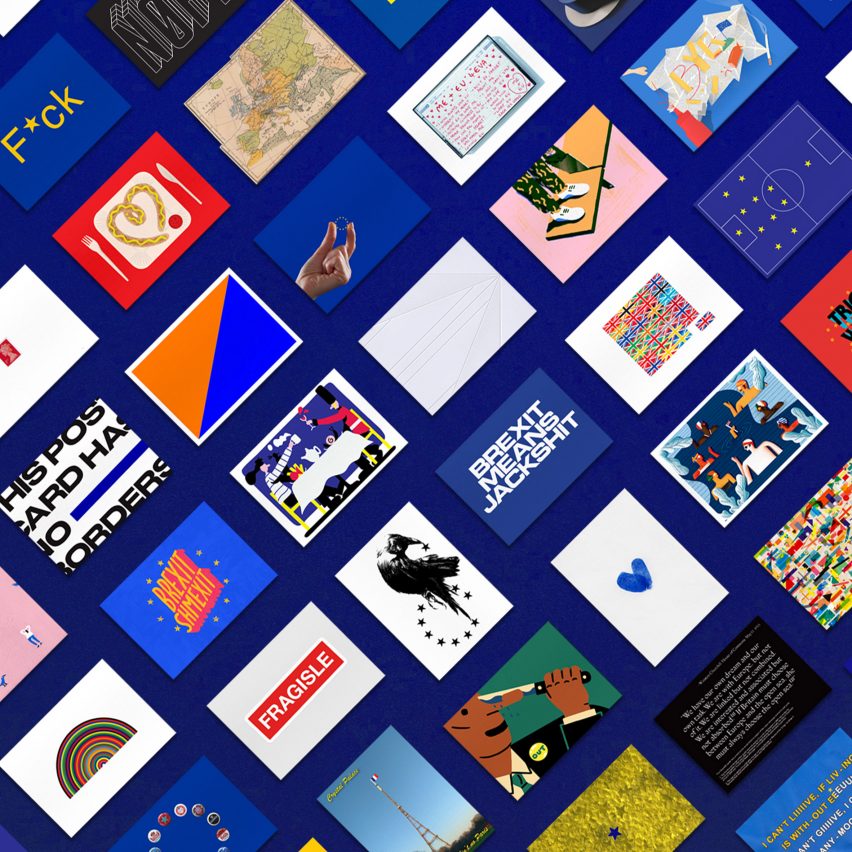
Me & EU by Nathan Smith and Sam T Smith
ME & EU is a collection of postcards written and designed by UK-based creatives to be sent across Europe as a means to remain connected post EU referendum. Set up in the weeks after the release of the election result, the project aimed to build on a sense of unity. The project never wished to change political discourse or action but aspired to provide an outlet for those wishing to remain in touch. The postcards were sent out across all 27 EU countries on the trigger date of Article 50. With an overarching spirit of positivity and good humour, postcards acted as an intimate medium for individuals to express their message with the intention of initiating a dialogue.
Real Review by REAL with OK-RM
The editorial and design agenda of the magazine focuses on understanding the everyday objects and spaces that enforce and reinforce social, economic and political power relations. It pursues the contemporary through the format of the review. Printed on square pages, the addition of a vertical fold down the centre means each double spread is divided into four 'pages' instead of two.
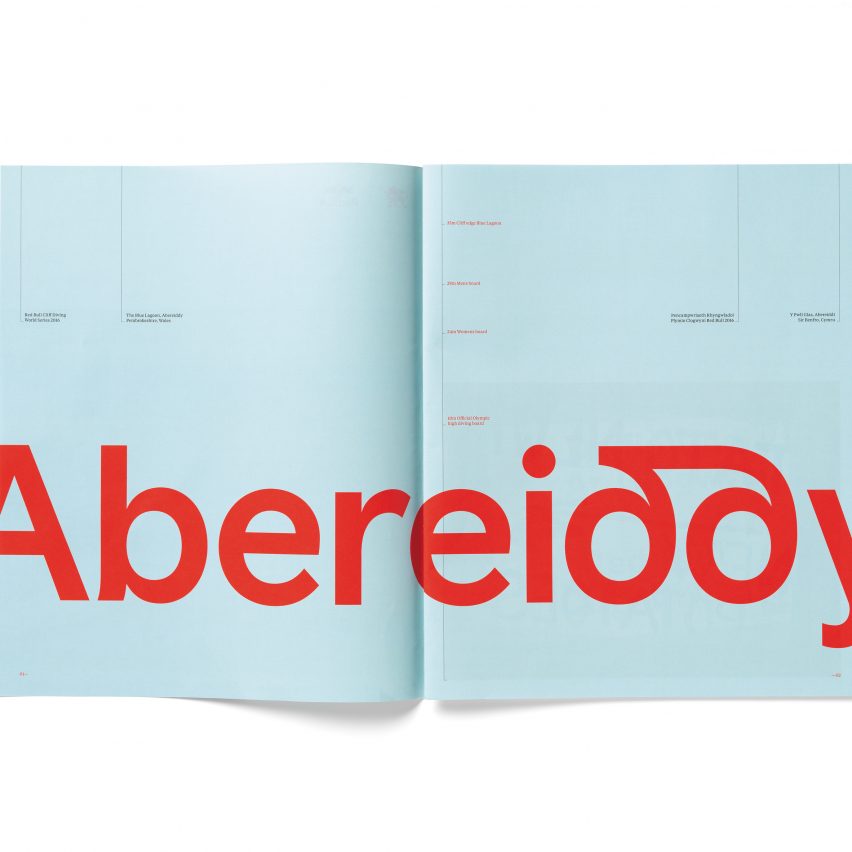
Wales Nation Brand by Smörgåsbord Studio
The re-visioned Wales nation brand was developed in response to the Welsh Government's ambitions to develop a refreshed and integrated strategy for promoting Wales to the world as a place to visit, trade, invest and live. At its heart is a contemporary and reductive rendering of the familiar dragon icon that re-establishes the link with the national flag. Another brand cornerstone is the bespoke typeface, Cymru Wales Sans, inspired by the Welsh typographical heritage and which incorporates digraphs that are unique to the Welsh language.
Sufferhead Original Stout by Emeka Ogboh
Sufferhead Original is a craft beer inspired by the experience of African immigrants living in Europe, especially Germany, and communicates some of the received stereotypes, politics of difference and integration associated with their expatriate fate through the brewing and branding of the beer. The name 'Sufferhead' derives from the 1981 track by Fela Kuti, 'Original Suffer Head', in which Fela sings about the deplorable political and economic situation in Nigeria at that time. The name also plays on the beer's strength, with a high alcohol by volume (ABV), and the possibility of a suffering head the day after.
Fractured Lands. The New York Times Magazine, August 14, 2016 by The New York Times
The Fractured Lands issue contained a single, very long (42 thousand-word), nonfiction narrative by Scott Anderson and 20 photographs by Paolo Pellegrin. The product of some 18 months of reporting, it tells the story of the catastrophe that has fractured the Arab world since the invasion of Iraq. 13 years ago, leading to the rise of ISIS and the global refugee crisis. The story gives the reader a visceral sense of how it all unfolded, through the eyes of six characters in Egypt, Libya, Syria, Iraq and Iraqi Kurdistan.
Unit Edition by Tony Brook, Adrian Shaughnessy and Patricia Finegan
Tony Brook, his wife Patricia Finegan and friend Adrian Shaughnessy all love books. They all had frustrations working on books with contemporary publishers, finding them 'controlling and risk averse' and not disposed to treating design seriously. So, the trio founded Unit Editions to make new books as well as they can possibly be made. Their mantra is: design books that no one else would think to publish. They operate out of the studio of SPIN: Brook and Finegan's design group. They use the internet to create their buying audience. Whether it be Kickstarter projects, social media launches or sales on their website, this independence from the conventional publishing model also gives them freedom from the conventional publishing approach to content.
Pro-EU anti-Brexit Poster Campaign by Wolfgang Tillmans and Between Bridges
A series of posters, t-shirt designs and campaign images urging British voters to remain in the EU, distributed by Tillmans but also available to download for free on his website. Campaign targeted young voters in particular, who were less likely to take part in the referendum but would ultimately be most affected by it.
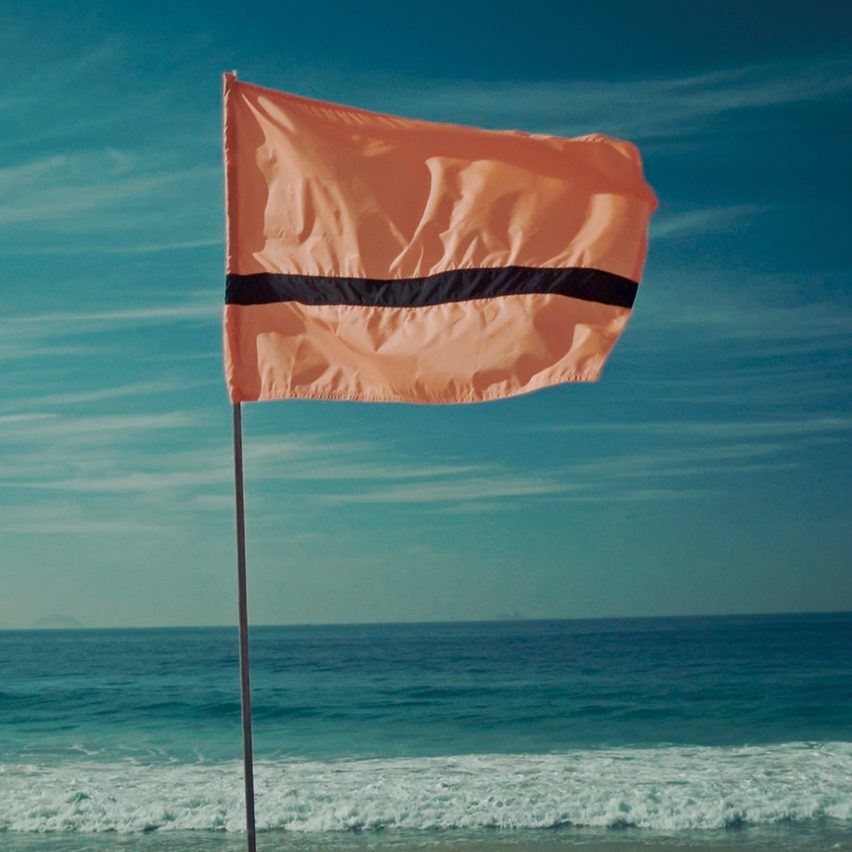
The Refugee Nation flag Yara Said with The Refugee Nation for Amnesty International
The flag for The Refugee Nation, a team of ten refugees competing in the Rio Olympics, draws its colour scheme and design from lifejackets. Designed by Syrian artist and refugee Yara Said, the flag is a vivid orange with a single black stripe. The flag serves to highlight the status of refugees as displaced persons, creating a sense of solidarity and awareness of the difficulties facing refugees.
Product
Avy Search and Rescue Drone by Paul Vastert, David Wielemaker, Christian McCabe and Patrique Zaman
Last year alone, 3,500 refugees perished attempting to cross the Mediterranean Sea. The Avy Search and Rescue Drone is specifically designed to help refugee boats. The drone is capable of flying long distances, detecting vessels, and can drop life jackets, life buoys, food supplies, medication and communication devices.
Dansbana! Vårby gård by Dansbana!, Anna Fridolin, Anna Pang and Teres Selberg
Dansbana! is an organization working to create public places for dance. Dansbana! Vårby gård is located under a subway bridge and consists of a 10x10-metre space and a set of columns with an integrated sound system. Dancers can connect with their phones, play music and dance.
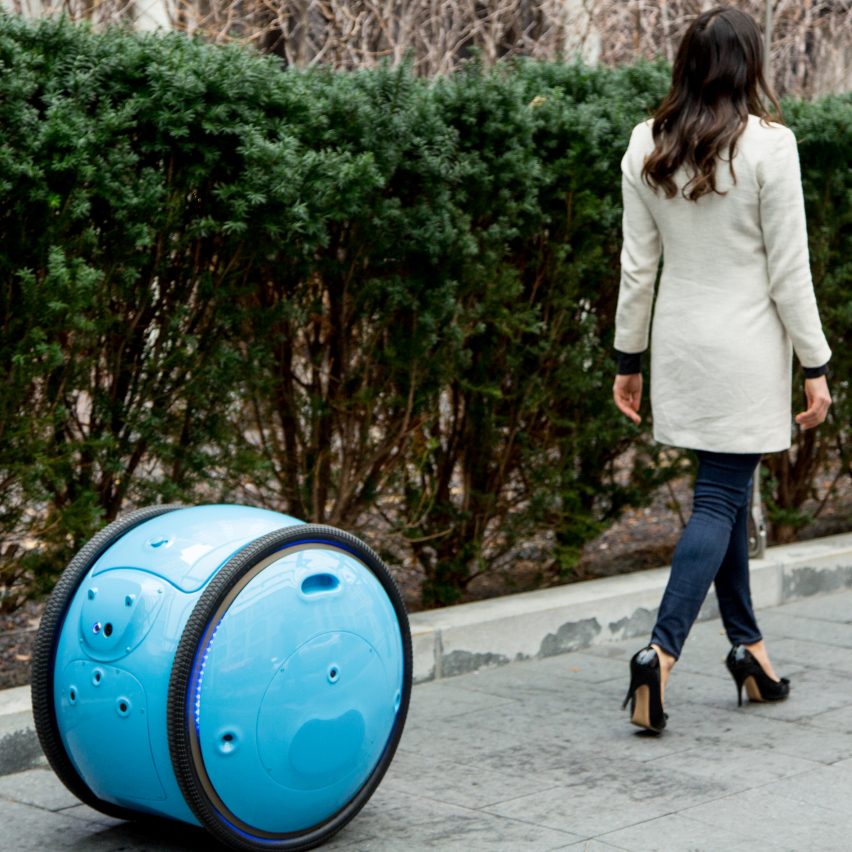
The company behind the Vespa scooter has made its first move into autonomous transportation with a robotic personal helper that carries your belongings for you. With an action reminiscent of Star Wars' R2-D2, the two-wheeled Gita can track its owner and roll along behind them.
BuffaloGrid – Connecting the Next Billion by BuffaloGrid
750 million people have mobile phones but not regular access to electricity. For many, getting their phone charged and connecting to the network is a daily challenge. BuffaloGrid believes everyone has the right to be included in our digital world and is working to help the next billion get connected and stay connected. Using the BuffaloGrid Hub, Cloud Platform and Agent Network, they are providing mobile power, internet and services to customers in North India.
Alphabet of Light by Bjarke Ingels Group (BIG) for Artemide
A series of wall-mounted letters are formed from bent and straight elements of LED strip light joined together by magnets, with the intention to make assembly easy for the user. The system's entire inner-workings are concealed, leaving only a minimalist and elegant product on display. The light can be customised for any wall, ceiling or space within minutes.
Flax Chair by Christien Meindertsma for LABEL/BREED
Christien Meindertsma's Flax Chair shows is a surprising and radically innovative piece of furniture. The chair is constructed from boards that are made out of flax
and a sustainable glue. After being cut out of this board, the pieces are bent into their form.
AIR-INK is a clean-tech company that has industrialized the process of capturing and recycling air pollution emissions into advanced pigments and inks.
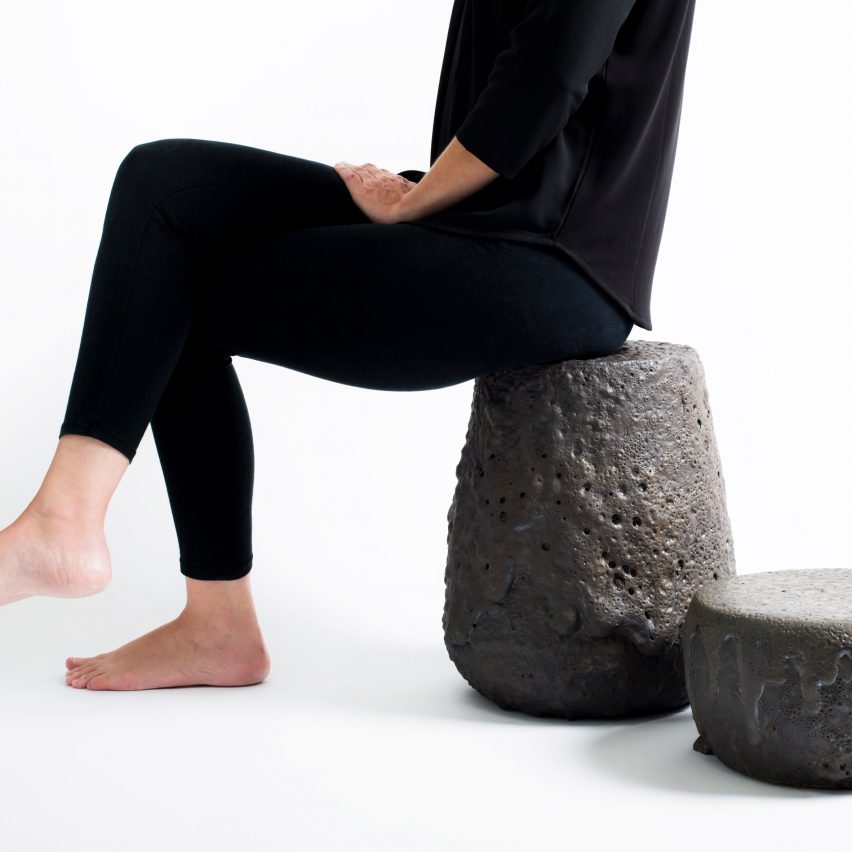
Remolten by gt2P with Friedman Benda
Chile has the second largest and most active chain of volcanoes in the world. Throughout the Chilean mainland, there are at least 2,000 volcanoes. Remolten is the second collaboration of the Chilean studio gt2P with the New York‑based gallery Friedman Benda. It is mainly a practical research project to develop a physical parametric methodology (Paracrafting) for the production of objects in Remolten volcanic lava.
The wedge dowel is a small plastic or wooden fitting with milled grooves all around, which looks much like a threaded screw. It clicks into pre-drilled holes, making screws and tools unnecessary and lowering the assembly time for a piece of furniture by 50 to 80 per cent.
Solid Textile Board Benches by Max Lamb for Really ApS and Kvadrat
A collection of 12 benches made entirely from Solid Textile Board, designed as a showcase to demonstrate and celebrate the unique properties of this new sustainable material manufactured from end-of-life textile waste.
Rapid Liquid Printing by Self-Assembly Lab, MIT in collaboration with Steelcase
Rapid Liquid printing (RLP) physically draws in 3D space within a gel suspension, and enables the creation of large scale, customised products made of real-world materials. 3D-printing hasn't taken off as a mainstream manufacturing process as it is too slow compared to conventional processes, is limited by scale and the materials are typically low-quality. RLP addresses these limitations: it is incredibly fast (producing structures in a matter of minutes), designed for large scale products (you can print an entire piece of furniture) and uses real-world, industrial-grade materials.
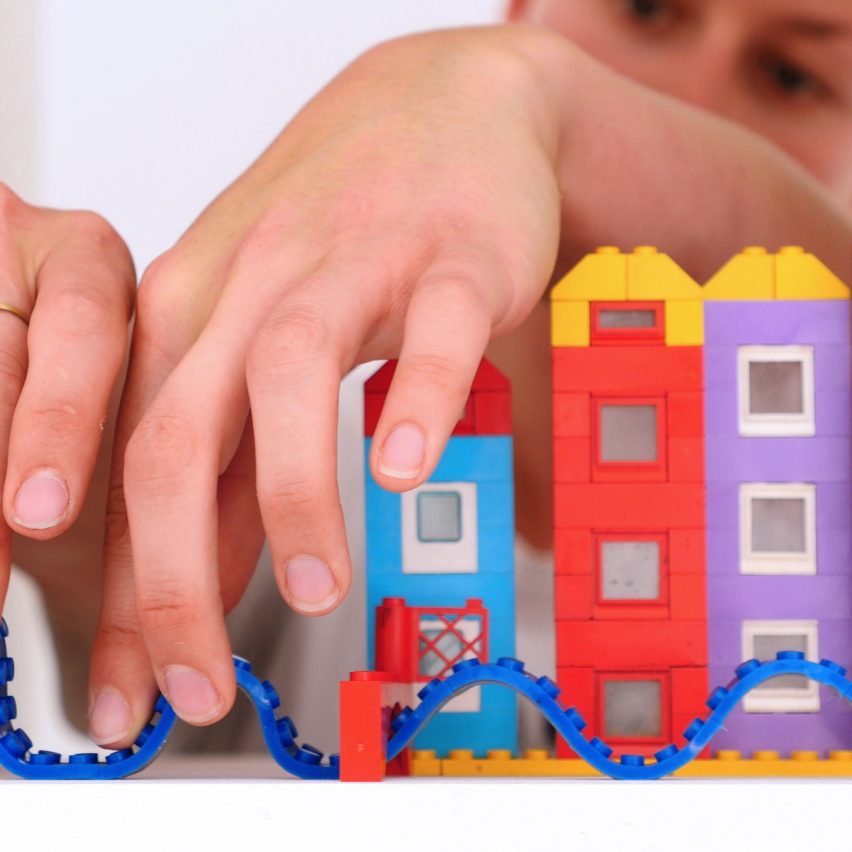
Nimuno Loops by Anine Kirsten and Max Basler
Nimuno Loops tape has been developed to allow Lego builders to place their creations on the walls, the ceiling, furniture and pretty much anywhere. It can be cut and it bends sideways as well. It is an extension of with Lego and allows for an even more creative engagement with an abundance of possibilities.
Scewo by Thomas Gemperle, Adrien Weber, Naomi Stieger, Stella Mühlhaus, Bernhard Winter, Pascal Buholzer at the Swiss Federal Institute of Technology
Scewo is a stairclimbing mobility device that will allow disabled and elderly persons to be more flexible and independently reach locations that were previously inaccessible. Scewo is a stairclimbing mobility device developed by a group of students at the Swiss Federal Institute of Technology. Using a retractable set of rubber tracks, the wheelchair can safely and smoothly travel both up and down stairs, while an extra pair of wheels at the rear of 20 the chair allows users to raise the chair up so that they can engage with others at eye level.
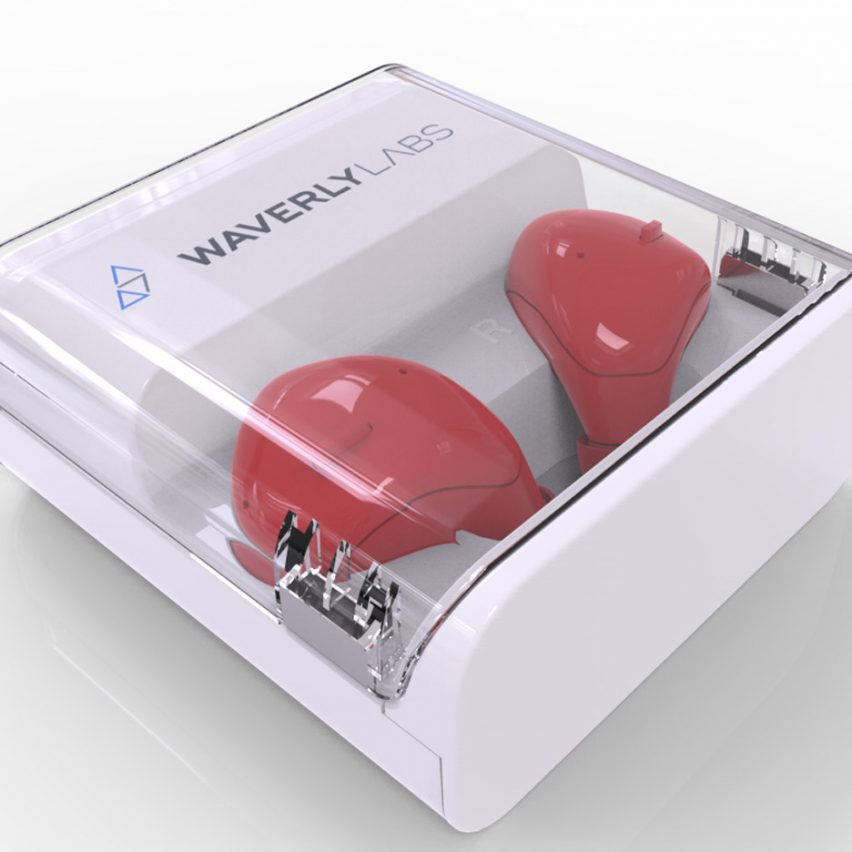
The Pilot translating earpiece by Waverly Labs
The Pilot earpiece translates between users speaking different languages. It currently works with 15 different languages but can be updated with more. It uses two microphones for noise cancellation and translates simultaneously without interruption. It was part of a crowdfunding campaign that raised more than 5 million dollars for pre-sale.
SNOO Smart Sleeper by Yves Béhar, fuseproject
Lack of sleep for new parents is an everyday norm, and a serious issue which can quickly become a health problem for both parents and the baby. SNOO is the world's safest baby bed. SNOO keeps a baby safe while parents sleep. When the baby cries, a parent can simply push SNOO's button, and it will respond to the baby with increased sound and motion for three minutes, until the baby falls asleep again. SNOO also helps a baby establish circadian rhythms to establish a day-night sleep schedule faster.
Transport
Autonomous Rail Rapid Transit (ART) by CRRC Zhuzhou Institute
ART system is an intelligent rail system that runs on sensors and rubber wheels creating a cross between a train, tram and bus. The new type tram has a dual redundant multi-axle steering system that ensures the vehicle is traveling along the fixed track and has a lane departure warning system that reminds the driver to pay attention to safety when the vehicle deviates from the track.
Mahjouba Initiative by Eric van Hove
The Mahjouba Initiative is an on‑going Morocco‑based project by artist Eric van Hove. The aim of the initiative is to design an electric moped for the local market using mainly Moroccan craft techniques and materials.
Olli by Local Motors
Olli is the world's first electric, self-driving vehicle. It can carry up to 12 passengers, serving as a single vehicle solution or as part of a network of smart vehicles all working together. Olli's vision and purpose is to be the first vehicle in a self-driving system to integrate sensors, cognitive intelligence, autonomy, electromobility, 3D printing and several other technologies.
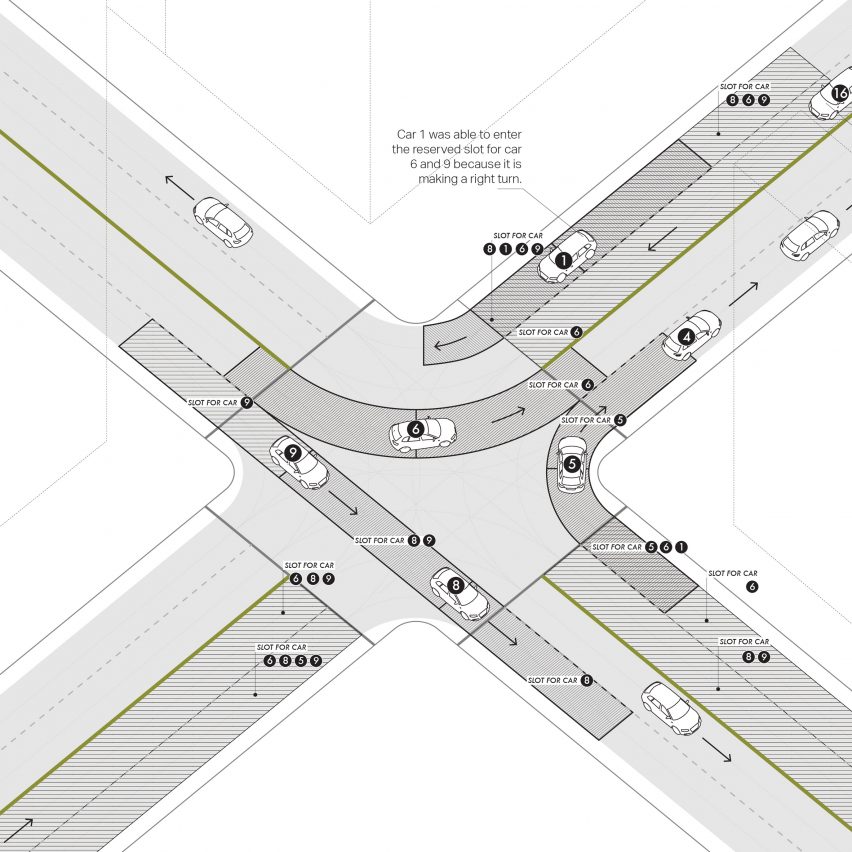
Light Traffic by Carlo Ratti at Senseable City, Massachussetts Institute of Technology (MIT)
Researchers from MIT, the Swiss Institute of Technology and the Italian National Research Council have developed a conceptual traffic system that would enable driverless vehicles to drive through intersections without colliding, eliminating the need for signals.
Seabubbles by Ailain Thebault
A new design for water taxis that have zero noise, zero CO2 emission, and a self-charging dock that gives back energy to the grid and cleans the waterways
Honda Moto Riding Assist by Honda
The Honda Moto Riding Assist motorcycle leverages Honda's robotics technology to create a self-balancing motorcycle that lowers the possibility of falling over while the motorcycle is at rest, reducing the number of accidents in slow-moving traffic. Powered by a digital system, the technology disengages the handlebar from the front forks when the motorcycle is travelling at speeds below three miles-per-hour, allowing a computer to take control.